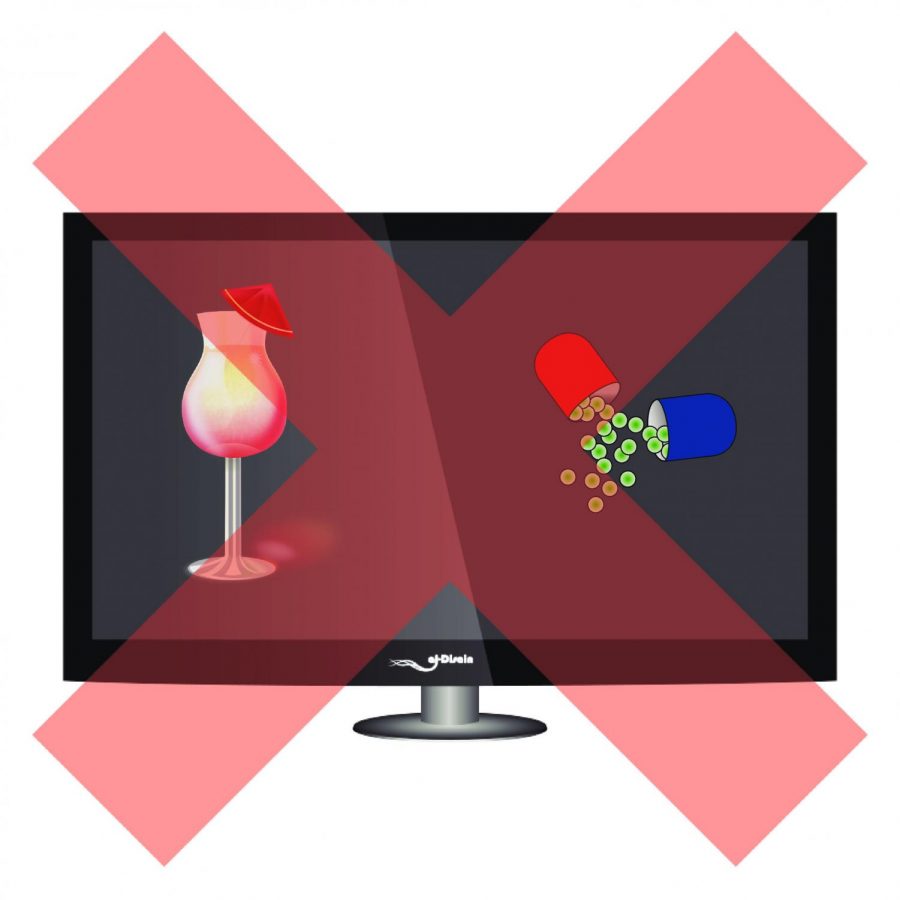OPINION: Pop culture depicts drugs too positively
Drugs, alcohol are shown with all of the pros, none of the cons on movies, TV
Drugs and alcohol are portrayed in a positive, fun light in pop culture, but that doesn’t tell the whole story.
September 8, 2020
In honor of September being National Recovery Month, I decided to investigate today’s depictions of drug use through pop culture, social media, television and the negative effects of it.
Ken Faunce, associate professor in WSU’s department of history, said throughout history, drugs have been portrayed positively and negatively. When discussing the 1950s through the 1970s, Faunce described drug use as a “mixed bag” in movies.
“You see some coming out with the evils of drugs, while at the same time, you have others about enlightenment with drugs,” Faunce said. “Some movies treat it very seriously and very realistically, and others treat it very funny.”
Faunce said more lighthearted movies, such as stoner comedies, versus the hard-hitting movies depicting the negative side of drug use would fluctuate depending on the time period. He said this trend continues today.
“I see both [points of view depicted], depending on who’s posting on social media,” Faunce said.
Faunce said movies and television shows such as “Weeds,” “Dude, Where’s My Car?” and “The Big Lebowski” describe a lighthearted depiction of drug use.
“‘Breaking Bad’, for instance, in a way, it kind of takes it kind of lightly in a way, and glorifies it in a way but it really shows the desperation,” Faunce said. “As we progress, you move from being cutting edge in dealing with hard issues in the world today, to shock value.”
Now aware of the history behind drug portrayal, I wanted to relate this information to the present day. I was invited to a collegiate recovery group for WSU students and alumni called “Cougs for Recovery.” I was able to hear these individuals’ real stories and the influence that television and social media relating to drug and alcohol abuse had on them.
Jon Wallis, C4R co-founder and WSU alumnus, said drug abuse and alcohol use wasn’t as pretty as the media depicted it.
“It planted certain expectations of what college was, and what a frat party was, and [what] a college party was and how romanticized it was from some media sources,” Wallis said.
“I think it’s very dangerous in a way that social media and kind of popular media kind of associates college with drinking and drug use,” Noel Vest, C4R co-founder and WSU alumnus, said. “We tend to report or record our lives basically depending on what other people think is cool.”
Wallis and Vest said there were specific examples of drug and alcohol use that do not show the negative effects.
“My mind goes to every alcohol commercial,” Wallis said. “In the commercial, I feel like it’s still so honestly combined with sex and that’s what sells.”
Vest said the film “Fear and Loathing in Las Vegas” romanticized addiction. The characters of Dr. House and Karen on “Will and Grace,” he said, are examples of individuals taking drugs with no consequences, like extreme highs but no lows.
The members of C4R said the movies “S.M.A.S.H!” and “Candy” show accurate depictions of drug use.
Wallis said people often simulate things they see in shows, such as the addiction shown in “Euphoria.”
“I feel like that’s often the experience, that this won’t happen to me, that I’m going to test this boundary and there’s sort of a thrill in that,” Wallis said.
Those interested in following Cougs for Recovery can follow them on Twitter @cougs4recovery. Those interested in joining Cougs for Recovery’s Zoom meetings can reach out to wippullmangroup@gmail.com. Their email is anonymous. Meetings are held at 3:30 p.m. every Wednesday on Zoom.









